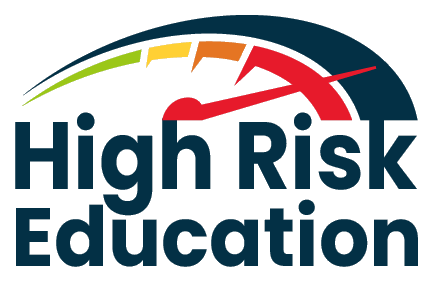Three Important Elements of an OFAC Screening Program for Beginners
Part of the Early Career Professional Series
At High Risk Education, we meet a lot of new financial crime officers and compliance professionals who are stepping into sanctions compliance for the first time. One of the biggest early challenges is understanding what an OFAC (Office of Foreign Assets Control) screening program really looks like in practice.
It’s no longer just a checklist item. In many institutions, OFAC screening has grown into its own program, with dedicated staff, systems, and oversight. If you’re just starting out, it’s critical to focus on the three pillars that form the foundation of every strong OFAC program:
- Comprehensive Screening Protocols
- Leveraging AI and Technology for Better Accuracy
- Robust Governance and Ongoing Training
1) Comprehensive Screening Protocols: Building Your Foundation
Strong OFAC programs begin with clear and consistent screening practices.
- Automation is non-negotiable: Manual checks can’t keep up with thousands of transactions and constant list updates. Automated screening ensures you’re catching issues in real time.
- Risk-based screening matters: Not all customers or transactions are equal. High-risk clients (e.g., foreign, politically exposed, high-volume movers) deserve enhanced screening; lower-risk clients can follow standard protocols.
- Escalation procedures must be clear: Your team needs a playbook for what happens when the system flags a potential match. Who reviews it? Who decides next steps? What’s reported to OFAC?
- Documentation is your shield: Regulators don’t just want to know you screened—they want proof. Detailed records of every check, result, and decision are essential.
Training takeaway: As a new compliance officer, your first task isn’t memorizing the OFAC list—it’s learning how your institution’s workflow handles matches, escalations, and documentation.
2) Leveraging AI and Machine Learning for Better Accuracy
For beginners, sanctions screening can feel like “searching for a needle in a haystack.” The good news? Technology is making that search more efficient.
- AI reduces false positives: Modern systems learn from patterns, improving accuracy and freeing compliance teams from wasting hours on meaningless alerts.
- Fuzzy matching is critical: Names like Mohammad, Muhammed, or Mohamad can all refer to the same person. Smart systems catch these variations.
- Integration across channels is key: Sanctions risk doesn’t stop at wire transfers. Account openings, trade finance, mobile apps—all must feed into one screening process.
Training takeaway: As a new officer, push beyond just “trusting the system.” Learn how AI-driven screening works, why fuzzy matching matters, and how integration prevents gaps. The technology is powerful, but it’s only as good as the people who understand it.
3) Robust Governance and Training: Sustaining Compliance
The final pillar is what ensures your program lasts: people, policies, and oversight.
- Roles and responsibilities must be clear: From frontline staff to IT and senior leadership, everyone should know their part in OFAC compliance.
- Training is ongoing, not one-time: Onboarding, refresher courses, simulations, and role-specific instruction keep your team sharp.
- Audits and testing keep you honest: Independent reviews and stress-tests of your systems reveal weaknesses before regulators do.
- Stay current with changes: OFAC lists and enforcement expectations evolve constantly. Subscribe to updates, track enforcement actions, and adjust policies quickly.
Training takeaway: Compliance is a living discipline. The most successful officers are learners—they stay updated, ask questions, and treat training as a continuous process.
Wrapping It Up
If you’re just starting in OFAC compliance, focus on the three pillars:
- Build strong screening protocols.
- Leverage AI and technology.
- Strengthen governance through clear roles and continuous training.
These aren’t just regulatory checkboxes—they’re the skills and habits that will make you effective in your new role.
At High Risk Education, we believe compliance programs succeed when officers are equipped, confident, and trained. Whether you’re building your first sanctions policy or looking to enhance your institution’s program, education is the key to turning OFAC compliance from a challenge into a strength.


